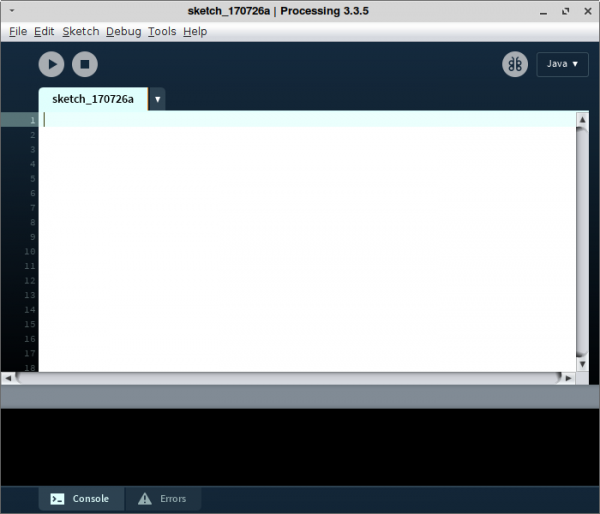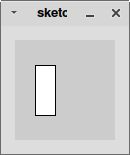Table of Contents
Setting Up
Installing Processing
Processing is available for all three major desktop operating systems: macOS, Windows, and Linux. To install Processing, go to the project's download page at https://processing.org/download/ and select the appropriate version for your computer.
There is more than one version for Windows and Linux! Make sure you get the right one for your computer.
On macOS, the archive is a standard app bundle, so just install it the way you normally install applications.
The Windows archive is completely self-contained. Just unpack the .zip file and put the resulting folder someplace convenient.
On Linux, unpack the archive, open a terminal, and run the install.sh script inside the archive.
Running Processing
Once you have successfully installed Processing, start the Integrated Development Environment (or IDE, the tool used to write and run you code) as follows:
- on macOS:
 : TODO
: TODO - on Windows, look inside the Processing folder you unpacked for a file called
processingorprocessing.exe(depending on your system settings). Double-click it. - on Linux, you should have a new entry in your list of applications called Processing. It might be under a category called “Development” or similar. Once you find it, you can launch Processing clicking the icon.
The first time you run the Processing IDE, you should see something like the following.

The white text entry area with the flashing cursor is where you will enter your Processing program statements. In that area, enter the following:
rect(20, 25, 20, 50);
Don't worry if you don't understand the text. Just type it in very carefully.
Once you have done that, click on the right-pointing arrow in the round circle (the Run button) in the toolbar. After a few moments you should see a new window.
Saving your work
Processing uses the term sketch to identify what other languages typically call programs. The file extension for Processing sketches is .pde.
To save your work, go back to the IDE, select File > Save or File > Save As… from the menu bar and give your program a name. By default on Windows, the Processing development environment will save your work to the Documents\Processing folder. On macOS, the default location is  TODO. On Linux, it's
TODO. On Linux, it's /home/<your-username>/sketchbook.
When you create a new program (i.e., sketch) by saving a file, the Processing IDE will create the program inside a new folder with the same name as the program. So, if you create a program named “KittenDance”, you will see a folder inside your sketchbook folder called KittenDance. And if you look inside the KittenDance folder, you'll see a file called KittenDance.pde. That is your actual Processing program. The reason for the folder around your *.pde file is that very often your program will need additional resources (image files, sound files, etc.), and having a separate folder for the whole project gives you a very convenient place to put these resources.
To reopen a program in the IDE, click on File > Open…, navigate to the *.pde file, and select it.
You are now ready to start developing Processing programs.
